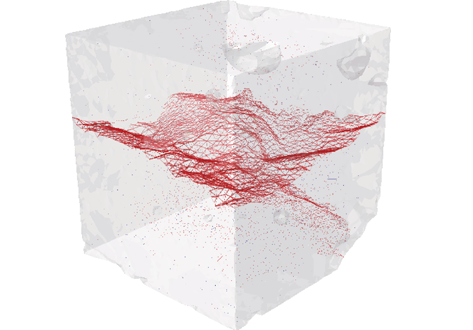Thermo Fisher Scientific › Electron Microscopy › Electron Microscopes › 3D Visualization, Analysis and EM Software › Use Case Gallery
An improved understanding of 3D cracking in concrete can be achieved by multiscale experiments and numerical modelling based on realistic microstructures, for the development of materials with higher strength, durability, and fracture resistance.

Three-dimensional (3D) characterisation and modelling of cracking in concrete have been always of great importance and interest in civil engineering. In this study, an in situ microscale X-ray computed tomography (XCT) test was carried out to characterise the 3D microscale structure and cracking behaviour under progressive uniaxial compressive loading. The 3D cracking and fracture behaviour including internal crack opening, closing, and bridging were observed through both 2D tomography slices and 3D CT images. Spatial distributions of voids and cracks were obtained to understand the overall cracking process within the specimen. Furthermore, the XCT images of the original configuration of the specimen were processed and used to build microscale realistic 3D finite element (FE) models. Cohesive interface elements were inserted into the FE mesh to capture complicated discrete crack initiation and propagation. An FE simulation of uniaxial compression was conducted and validated by the in situ XCT compression test results, followed by a tension simulation using the same image-based model to investigate the cracking behaviour. The quantitative agreement between the FE simulation and experiment demonstrates that it is a very promising and effective technique to investigate the internal damage and fracture behaviour in multiphasic composites by combining the in situ micro XCT experiment and image-based FE modelling.
The artificial defects such as beam hardening and ring effects reduce the quality of scanned images and hence affect later segmentation results. They were minimised and further corrected by postprocessing using CT Pro (e.g., finding the true centre of rotation) and AVIZO (e.g., using background and flat-field correction filters). (…) The segmented 3D image, as shown in Figure 8, was used to generate the 3D FE mesh by commercial packages AVIZO (…)
For Research Use Only. Not for use in diagnostic procedures.